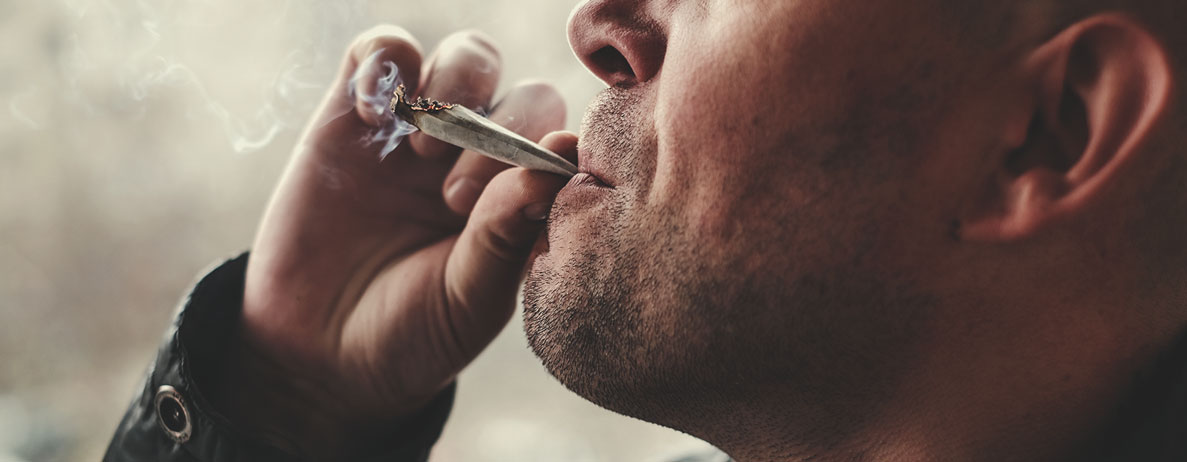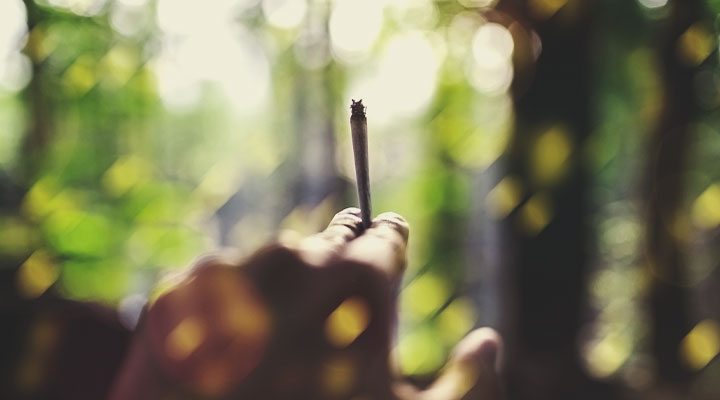.

Why to Consider Set and Setting When Using Cannabis
Do you give much thought to where you use cannabis? How about your mindset just before a smoke or vape? Doing so could dramatically increase how much you enjoy this altered state of consciousness. The concept of set and setting, officially formulated in the 1960s during research on psychedelics, also has a large influence on the cannabis high.
Contents:
- The ancient history of set and setting
- The workings of the human mind
- Beyond psychedelics: natural altered states of consciousness
- How do set and setting relate to cannabis?
- Set: preparation and intention
- Setting: physical, social, and cultural environment
- Set and setting for cannabis: tips and tricks
- Can you mix weed and mushrooms?
- Set and setting: a keystone of responsible cannabis and psychedelics use
What do you know about set and setting? If you’ve read anything on the topic of psychedelics, even just a little bit, you’re probably aware that “set” refers to a person’s mindset when consuming a hallucinogen, and “setting” refers to the physical and social environment in which they take it. This concept seems simple at first glance, but it has roots in psychedelic psychology and can have a profound impact on the outcome of a hallucinogenic experience. The concept isn’t confined to the domain of psychedelics, either. While not a classical psychedelic, the concepts of set and setting can be applied to cannabis, allowing users to greatly improve their experiences with the herb.
The Ancient History of Set and Setting
Despite the popularisation of set and setting as a concept in recent decades, the idea of psychologically and physically preparing for an altered state of consciousness spans back into antiquity. While many psychonauts of the modern era have no qualms casually chowing down mushrooms on a Friday night or dropping acid on the way to a gig, several ancient cultures approached mind-altering plants and fungi as sacraments worthy of preparation and ceremony.
The ancient tribal use of ayahuasca (a DMT-containing plant concoction) revolved around healing ceremonies and divination[1]. The Mazatec curanderas of Oaxaca also harnessed psilocybin-containing mushrooms in ceremonial settings in an attempt to heal attendees.
Examples of set and setting throughout history go on and on. The highly secretive Eleusinian Mystery Rites[2] of ancient Greece involved the ingestion of a drink containing the psychedelic ergot fungus that took place in the Telesterion (Hall of Initiation). The mescal ceremonies[3] of indigenous Americans made use of the psychedelic mescaline found in various species of cacti; ethnographic reports state that ceremonial elements of prayer, song, and fire exerted a strong psychological effect during these rituals.
-
Modern History
Moving slightly closer to the present day, the Parisian Club des Hashischins (a bohemian group dedicated to exploring altered states of consciousness) also gave credence to the idea of set and setting. The psychiatrist Jean-Joseph Moreau supplied the club—which included 19th-century French writers such as Victor Hugo and Alexandre Dumas—with the hash they used to traverse their minds. Moreau noted that equal doses of the drug tended to produce dramatically different effects in an individual based on external cues, even minor factors such as a gesture or look.
Psychedelic researchers of the 20th century also started to grasp the importance of set and setting, and laid the foundation for our understanding of these concepts today. For example, Office of Strategic Services worker Alfred Hubbard (also known as the “Johnny Appleseed of LSD”) used music and religious imagery to improve outcomes when treating alcoholism patients with LSD in the 1950s.
American Harvard psychologist Timothy Leary went on to popularise—and some say coin[4]—the term “set and setting” in the world of psychedelic psychology. Leary and his team published several hypotheses surrounding the concept during the 1960s (a legal climate in which LSD research peaked) and argued that set and setting are the most important determinants of an altered state of consciousness. In their view, set includes intention and personality, and setting comprises the physical environment, emotional and social environment, and cultural environment.


The Workings of the Human Mind
As the most complex biological system[5] discovered in the universe, humans must rely on their own brains to gain a deeper understanding of how it works. While much about the brain remains outside of our grasp, we’ve learned a thing or two about how this biological computer controls our bodies and influences our perception of the world.
The brain features around 86 billion neurons. These microscopic information messengers use both electric and chemical signals to send “data” between different regions of the brain. The traffic between these cells dictates almost everything about us, including our personality, memory, how we feel, and our desires. Neurotransmitters, such as dopamine, serotonin, GABA, and glutamate, play a huge role in this system. These chemicals bind to receptors located on neurons and, in doing so, create changes within these cells.
Our baseline level of consciousness requires a certain balance of these chemicals. However, external molecules, such as those found in psychedelic plants and fungi, can influence neurotransmitter systems and drastically alter our thoughts, perceptions of the outside world, and sense of place in the universe.
-
How Psychedelics Influence the Mind
The simple act of introducing an external psychedelic molecule into this system can have profound implications. Let’s look at psilocybin, the prodrug of psilocin (the main psychedelic compound in magic mushrooms) as an example.
After munching down on some mushrooms, psilocybin is rapidly turned into psilocin, which enters the brain and interfaces with the serotonergic system—a collection of neurons and chemical messengers that underpin appetite, sleep, and cognitive function. Specifically, psilocin is believed to bind to the serotonin 2A receptor[6] (5-HT2A), a site important in memory and cognition[7]. This simple cellular activity leads to intense experiences at high-enough doses, including major shifts in mood, perception, thought, and self-experience[8]. Research is currently exploring if psilocybin has the potential to boost neurogenesis[9] (the generation of new neurons) and impart positive long-term changes in personality[10].
Other potent psychedelic compounds, such as N,N-dimethyltryptamine (DMT), also bind to serotonin 2A receptors[11] to produce an intense altered state of consciousness. Some scientists even hypothesise that the human brain synthesises DMT in small amounts to fulfill psychological functions. However, at greater doses, the molecule leads to profound subjective experiences, described by many as being catapulted into other realms and perceiving detailed geometric imagery.
Other simple microscopic molecules, including LSD and mescaline, are also able to produce drastic shifts in the way we perceive our internal and external worlds by binding to receptors dotted around the outside of our brain cells.


Beyond Psychedelics: Natural Altered States of Consciousness
The ethnopharmacologist Dennis McKenna once said, “Life itself is a drug experience”. Psychedelics only influence our minds because our brains are already full of drugs. Our biological computer possesses an opioid system and cannabinoid system, and manufactures drugs to run both. Because of this, we don’t always need to ingest hallucinogens to feel high and even trip out. Both ancient cultures and modern minds have devised ways to alter our perception through natural means, including meditation[12], holotropic breathing[13], religious experiences, and even strenuous exercise.
How Do Set and Setting Relate to Cannabis?
It certainly makes sense to employ the concept of set and setting when working with the psychedelic molecules mentioned above. These chemicals can induce extreme altered states of consciousness, and proper set and setting help to reduce the chances of a bad trip while boosting the odds of a rewarding experience. But does set and setting also apply to cannabis?
Cannabis isn’t a classical psychedelic. Rather than acting primarily on the serotonergic system, compounds such as THC induce a high through the endocannabinoid system. This mechanism results in an experience often described as euphoric and relaxing. However, even a small concentration can cause feelings of overwhelm, panic, and anxiety in some users. The effects of cannabis are also largely influenced by the route of administration. Oral THC converts to 11-hydroxy-THC in the body, a much more potent molecule. This metabolite still binds to the same receptors, but some anecdotal reports detail more significant alterations in consciousness, including hallucinations.
While taking set and setting into account can help to improve the cannabis experience for those prone to anxiety and panic, it can also optimise it for users that rarely experience the negative side of the herb. Below, we cover the key tenets of set and setting in general, and then look at them through the lens of cannabis.
Set: Preparation and Intention
When preparing for an altered state of consciousness, it helps to put your mind in the right place. Doing so will minimise the chance of a negative experience and help you get the most out of it. There are two factors to consider before diving in:
| Preparation | Thorough preparation before a psychedelic experience has the potential to set the foundations for a rewarding and pleasant trip. Théophile Gautier, an original member of the Club de Hashischins, wrote about the importance of adequate preparation and a “tranquil frame of mind and body”. Good preparation involves avoiding these substances during times of high stress, and attempting to calm the mind before a session using breathing techniques and meditation. Preparing for an experience in advance, and taking a day or two off before and after the occasion, will help to minimise stress and worries. |
| Intention | Setting an intention before a session helps to give it meaning and purpose. Focus on the outcome that you desire, the reason you’re taking a particular substance, and the experience that you wish to have. Intentions won’t always sway an experience, so try not to wrestle with whatever comes up. However, putting these goals and desires in place can help you to gain deeper insights into whatever you choose to focus on. |
| Preparation |
| Thorough preparation before a psychedelic experience has the potential to set the foundations for a rewarding and pleasant trip. Théophile Gautier, an original member of the Club de Hashischins, wrote about the importance of adequate preparation and a “tranquil frame of mind and body”. Good preparation involves avoiding these substances during times of high stress, and attempting to calm the mind before a session using breathing techniques and meditation. Preparing for an experience in advance, and taking a day or two off before and after the occasion, will help to minimise stress and worries. |
| Intention |
| Setting an intention before a session helps to give it meaning and purpose. Focus on the outcome that you desire, the reason you’re taking a particular substance, and the experience that you wish to have. Intentions won’t always sway an experience, so try not to wrestle with whatever comes up. However, putting these goals and desires in place can help you to gain deeper insights into whatever you choose to focus on. |
Setting: Physical, Social, and Cultural Environment
What does setting mean? It doesn’t just refer to creating a cosy environment. While this helps, setting also refers to your social and cultural surroundings. Let’s take a look at the three pillars of setting below:
| Physical environment | Your immediate environment can have a big influence on your experience. A cosy room lit with candles, a forest, or a tranquil meadow will increase the chances of a beneficial trip, especially compared to a busy party or an unpredictable public place. |
| Social environment | Social environment refers to the people around you during your experience. Ideally, you’ll trip with respectful and responsible people who want similar outcomes. A dedicated trip sitter will also help to keep others comfortable and safe. |
| Cultural environment | The cultural environment in which a trip takes place may determine how you perceive your experience. For example, those with more spiritual beliefs may perceive their hallucinations as very real and meaningful. Those with more reductionist outlooks may perceive nothing more than an alteration in brain chemistry causing pretty colors and images to appear. People with a grasp on psychology might try to interpret their experiences as manifestations of the subconscious. Our beliefs are partially impacted by our environment over a long period of time; people from different cultural backgrounds are likely to garner contrasting conclusions from their experiences. |
| Physical environment |
| Your immediate environment can have a big influence on your experience. A cosy room lit with candles, a forest, or a tranquil meadow will increase the chances of a beneficial trip, especially compared to a busy party or an unpredictable public place. |
| Social environment |
| Social environment refers to the people around you during your experience. Ideally, you’ll trip with respectful and responsible people who want similar outcomes. A dedicated trip sitter will also help to keep others comfortable and safe. |
| Cultural environment |
| The cultural environment in which a trip takes place may determine how you perceive your experience. For example, those with more spiritual beliefs may perceive their hallucinations as very real and meaningful. Those with more reductionist outlooks may perceive nothing more than an alteration in brain chemistry causing pretty colors and images to appear. People with a grasp on psychology might try to interpret their experiences as manifestations of the subconscious. Our beliefs are partially impacted by our environment over a long period of time; people from different cultural backgrounds are likely to garner contrasting conclusions from their experiences. |
Set and Setting for Cannabis: Tips and Tricks
The history of set and setting revolves around psychedelics, but these principles can also help to boost the odds of a positive cannabis experience. Creating a comfortable space (or heading out into nature), partaking with people you enjoy being around, making sure you’re in a good headspace, and setting an intention will help to optimise your high and mitigate any bad trips. Keep reading for some tips to dial in set and setting when it comes to weed.
⇢ Set
- Prepare accordingly: First off, you need to identify what you’re getting yourself into. Taking a couple of hits from a joint before bed requires considerably less preparation than hitting a huge dab or scoffing an edible during the day.
- Finish your duties: Complete everything you need to get done for the day before partaking. Any lingering work or unfilled obligations will cling to your mind and become amplified when high.
- Settle your emotions: Resolve that argument, forgive the person that cut the line today, and let everything go. You want to enter a cannabis experience feeling light and free, not with lingering feelings of resentment and anger.
- Look after your body: Eat a small meal before you get high and keep a bottle of water by your side. Our brains perform much better when we’re fed and hydrated. Sugar crashes and dry mouth are no fun when blazing.
- Set the tone: Regardless of where you choose to smoke (or eat), you can take measures to optimise your surroundings. Burn incense, light candles, and play soothing music. All of these things can have a positive impact on your mood and affect.
- Set your intention: What do you want out of the session? Are you simply looking to relax? Do you want to reach new philosophical depths with friends? Maybe you need to look at an issue in your life from a different perspective? Spend time thinking about your intentions before you spark that joint.
⇢ Setting
- Choose your spot: Where do you like to get high? Many cannabis users prefer the comfort of their own home or an open space out in nature. Forests, beaches, and hills make perfect smoking spots and put the mind at ease. In contrast, smoking in town centers and other busy public places stokes paranoia and discomfort in some users.
- Choose your company: Who are you smoking with? You’ll feel much more relaxed with close and trusted friends. Does your close circle tend to get competitive when smoking? Does that match your vibe? Or do you need to seek out new company that aligns with the way you want to experience cannabis?
- Consider your culture: Your cultural roots and influences can affect how you experience cannabis. It’s in all the movies, but you don’t have to spend your time sitting on the couch with a bag of crisps. Why not try something different? Head to the forest and take in the trees or go to the beach barefoot and experience cannabis in the more culturally neutral setting of nature.


Can You Mix Weed and Mushrooms?
Set and setting play an important role in improving cannabis and psychedelic experiences. It also comes to the fore when mixing these substances. For example, some users like to mix weed and mushrooms. Depending on the dose, the effects of shrooms can last six hours or more. Some users like to take a large dose of mushrooms and toke a joint here and there to layer in the effects of cannabis. Others like to take microdoses of both substances to remain functional and clear-headed while harnessing a cognitive edge.
Regardless of how you take them, the concept of set and setting still applies. If you plan on taking larger doses of both substances together, you need to remain particularly mindful of your immediate environment and how it makes you feel, who you’re around, and what your intentions are.
Set and Setting: A Keystone of Responsible Cannabis and Psychedelics Use
The National Organization for the Reform of Marijuana Laws (NORML) published the Principles of Responsible Cannabis Use[14] in an effort to inform users on how to enjoy the herb safely and with the least impact upon others. These guidelines specifically mention set and setting as a keystone principle to a safe and beneficial cannabis experience, and mention that a responsible user “does not hesitate to say ‘no’ when those conditions are not conducive to a safe, pleasant and or/productive experience”. Keeping these concepts in mind can help us to enjoy cannabis in the most responsible way while minimising bad trips, uncomfortable situations, and conditions that might alter our relationship with the herb in a negative way.
- Ancient medicinal plants of South America https://www.ncbi.nlm.nih.gov
- https://www.rcpsych.ac.uk/docs/default-source/members/sigs/spirituality-spsig/ben-sessa-from-sacred-plants-to-psychotherapy.pdf?sfvrsn=d1bd0269_2
- Constructing drug effects: A history of set and setting https://journals.sagepub.com
- Constructing drug effects: A history of set and setting https://journals.sagepub.com
- Foreword - Discovering the Brain - NCBI Bookshelf https://www.ncbi.nlm.nih.gov
- Psychedelic effects of psilocybin correlate with serotonin 2A receptor occupancy and plasma psilocin levels | Neuropsychopharmacology https://www.nature.com
- Frontiers | The role of serotonin 5-HT2A receptors in memory and cognition | Pharmacology https://www.frontiersin.org
- Acute, subacute and long-term subjective effects of psilocybin in healthy humans: a pooled analysis of experimental studies - PubMed https://pubmed.ncbi.nlm.nih.gov
- Frontiers | Psychedelics and Neuroplasticity: A Systematic Review Unraveling the Biological Underpinnings of Psychedelics | Psychiatry https://www.frontiersin.org
- Magic Mushrooms Can Bring About Lasting Personality Changes https://www.medicalnewstoday.com
- Frontiers | N, N-Dimethyltryptamine (DMT), an Endogenous Hallucinogen: Past, Present, and Future Research to Determine Its Role and Function | Neuroscience https://www.frontiersin.org
- Frontiers | Spontaneous Spiritual Awakenings: Phenomenology, Altered States, Individual Differences, and Well-Being | Psychology https://www.frontiersin.org
- Shibboleth Authentication Request https://www.proquest.com
- Principles of Responsible Cannabis Use - NORML https://norml.org




































